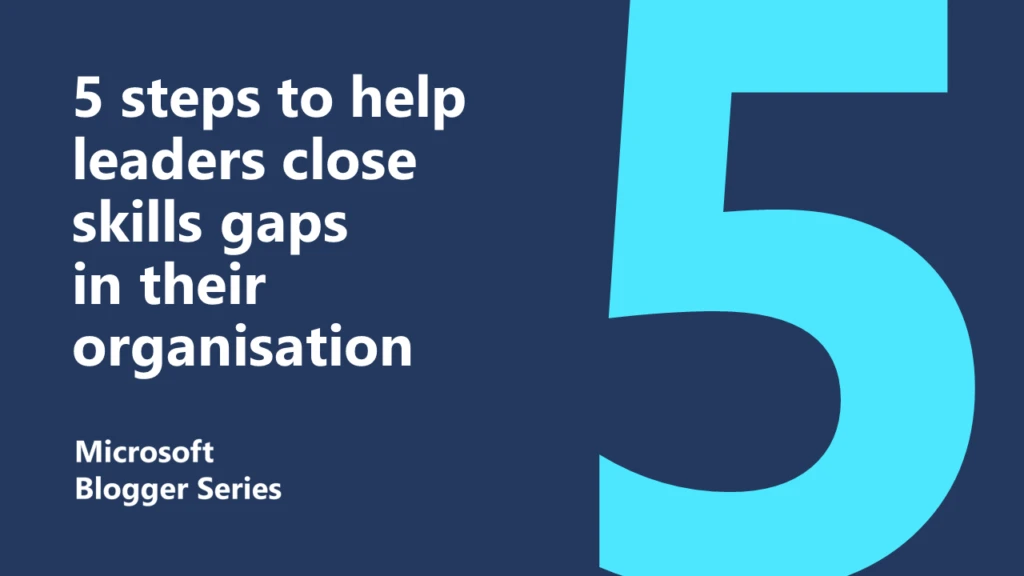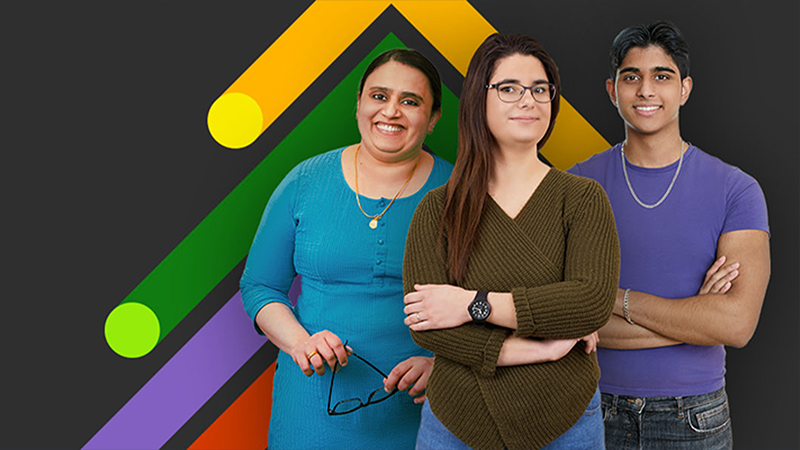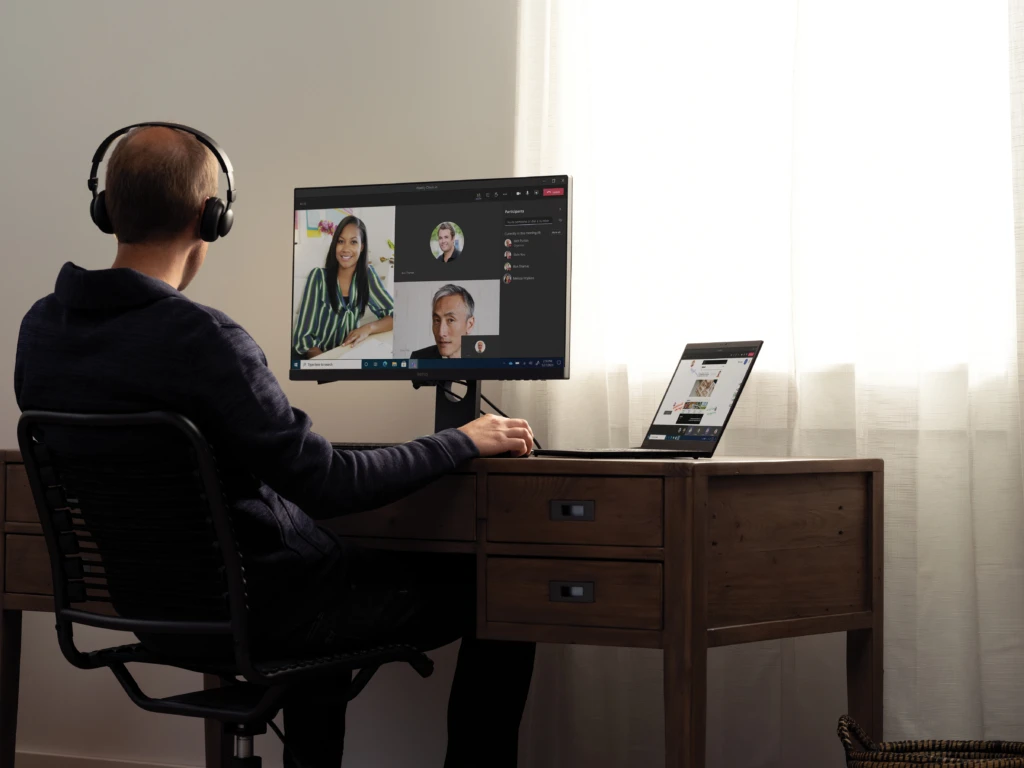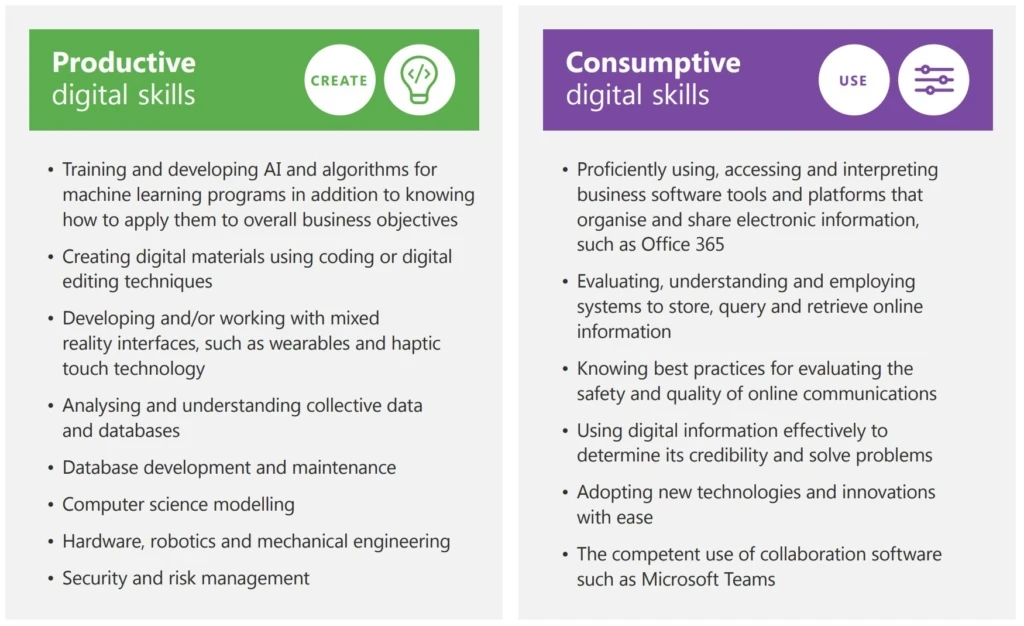
5 steps to help leaders close skills gaps in their organisation
 In my previous blog I introduced three inspiring learners, all of whom are building fulfilling technology careers. Reflecting on Enrique, Poornima and Amelia’s stories, I am reminded once more of the great value that can be gained from empowering employees to develop new skills and foster a learn-it-all mindset. How can leaders truly help employees like Amelia, Poornima and Enrique thrive? They should first consider the steps required to close skills gaps and build a culture of learning.
In my previous blog I introduced three inspiring learners, all of whom are building fulfilling technology careers. Reflecting on Enrique, Poornima and Amelia’s stories, I am reminded once more of the great value that can be gained from empowering employees to develop new skills and foster a learn-it-all mindset. How can leaders truly help employees like Amelia, Poornima and Enrique thrive? They should first consider the steps required to close skills gaps and build a culture of learning.
Despite rapid acceleration of digital modernisation, our recent research report – Unlocking the UK’s potential with digital skills – finds that 69 percent of leaders think they still have a skills gap within their organisation, despite 80 percent recognising that digital skills investment will be important to the country’s economic recovery. At the same time, employees are hungry to learn. 59 percent agree that developing digital skills will be important to their employability post-pandemic.
The challenge for many leaders now lies in how to create a culture in which employees are guided and empowered to learn the skills that they are eager to develop, and will be so important in the digital economy. To that end, I’ve penned a couple of thoughts and would love to hear your reflections in the comments below.
1. Acknowledge the skills gap
Awareness is the first step to action. It’s certainly a positive that almost 70 percent of UK leaders recognise the gaps in their digital capability. Now is the time to turn awareness into action.
Identify the barriers your organisation is facing when it comes to skills investment. It is possible your challenges are like those experienced by other companies. 37 percent of leaders cite cost as their primary challenge, whilst 28 percent are united in feeling that their lack of strategy holds them back. I often find engaging with my counterparts beneficial, not least as we discover shared challenges and learnings. If you aren’t sure where to start, organisations such as FutureDotNow provide useful opportunities to listen and learn from like-minded leaders on how to bridge skills gaps.
Then, create an integrated, cross-functional digital team who are responsible for driving the effective use of digital skills and solutions throughout the organisation. Work with this team to evaluate your technology stack, identify skills gaps and assess your digital talent pool.
2. Affirm your commitment
 Actively champion the value of lifelong learning. Share resources for employees to develop in-demand skills. Also, provide space for everyone to learn throughout the working week. Over time, these steps will contribute to an inclusive learning culture that will empower learners and prepare your organisation for the digital economy.
Actively champion the value of lifelong learning. Share resources for employees to develop in-demand skills. Also, provide space for everyone to learn throughout the working week. Over time, these steps will contribute to an inclusive learning culture that will empower learners and prepare your organisation for the digital economy.
At Microsoft, we host a quarterly learning day; an opportunity for employees to focus their time entirely on growth and development. Talks and training provide employees an opportunity to learn something new. We allocate space for employees to learn in the way that best suits them. Learning Day serves as an important and regular reminder to all the value of personal growth and skill development.
3. Invest in the right skills
One of the biggest challenges can be knowing which skills to focus on. Of course, this varies in every company. But we uncovered a great place to start: data literacy. Our research found that data literacy skills have the greatest impact on business performance. It also provides employees with a useful capability to develop in a wide range of roles. To further support leaders in identifying the right skills to invest in, we split digital skills in to two categories:
- Consumptive skills such as using Microsoft 365 and adopting new technologies to allow people to use digital tools and systems.
- More technical productive skills such as coding, developing algorithms, computer science modelling the enable us to create those solutions.
Since others adopt what the creators develop, productive skills can have double the impact on organisational performance. Your initiatives should take this distinction into account and deliver the right balance of learning options. Microsoft Learn is a great place for employees to get started.

When you empower people with digital skills they become interpersonally stronger too, leading to greater critical thinking, collaboration and decision-making. Build on this by offering training that goes beyond technical capabilities to support workers in developing professional skills such as creativity, adaptability and collaboration.
4. Nurture your Next Gen Workers
 Our research shows that a creative new generation has joined the workforce with a strong blend of consumptive and productive skills. These Next Gen Workers make up 73 percent of the workforce today. Democratise consumptive skills by providing opportunities for employees to learn and engage with no code/low code technologies such as PowerApps. In turn, the potential benefits for organisations and society could be significant.
Our research shows that a creative new generation has joined the workforce with a strong blend of consumptive and productive skills. These Next Gen Workers make up 73 percent of the workforce today. Democratise consumptive skills by providing opportunities for employees to learn and engage with no code/low code technologies such as PowerApps. In turn, the potential benefits for organisations and society could be significant.
5. Think differently about talent
To prepare for the new world of work, leaders should rethink their talent acquisition and development strategies by looking outside traditional talent pools to fill skills gaps. One such way could be to hire a digital apprentice into your organisation to support your goals and develop throughout the apprenticeship. I know first hand the value apprenticeships provide for both employer and employee. I would encourage anybody interested in hiring an apprentice to explore our new UK apprenticeship network.
Building skills in the new world of work
As we enter a hybrid world of work, conversations on skills and talent remain high on the agenda for leaders across the UK. The skills challenges within organisations are complex and unique, however these steps, alongside our our digital skills report, will provide you with actionable insights on how to unlock your organisation’s potential.
Recently, we’ve been discussing how to think differently about talent with industry leaders. It’s something that has been at the top of my mind as well. Therefore, in the next blog, we will dive a bit deeper on how to develop and attract diverse talent, with insights from leaders across the UK.
Find out more
Unlock the UK’s potential with digital skills
Learn how to harness the power of data
Develop your skills and own your story
About the author
 Simon is passionate about unlocking the potential in every person and organisation and has been with Microsoft since 1999. In his role as UK Chief Learning Officer, Simon is responsible for leading the learning culture and skilling strategy in the UK and driving the execution for customers, partners, employees, and future generation skilling. Prior to this, Simon has held several senior positions at Microsoft, leading several businesses across the UK and EMEA.
Simon is passionate about unlocking the potential in every person and organisation and has been with Microsoft since 1999. In his role as UK Chief Learning Officer, Simon is responsible for leading the learning culture and skilling strategy in the UK and driving the execution for customers, partners, employees, and future generation skilling. Prior to this, Simon has held several senior positions at Microsoft, leading several businesses across the UK and EMEA.




